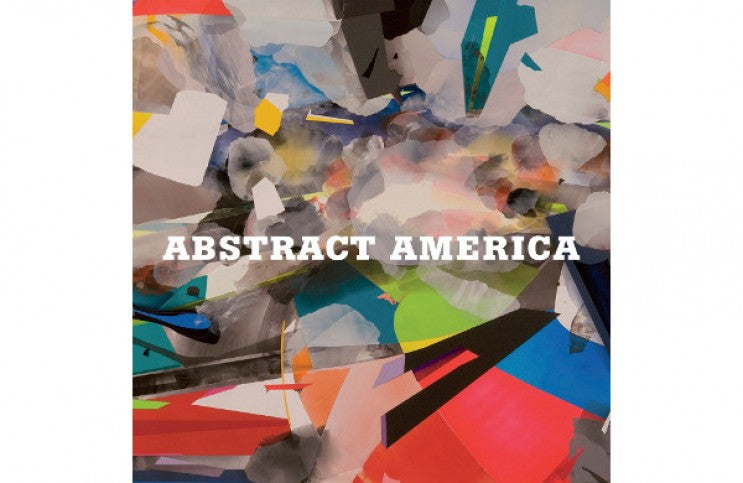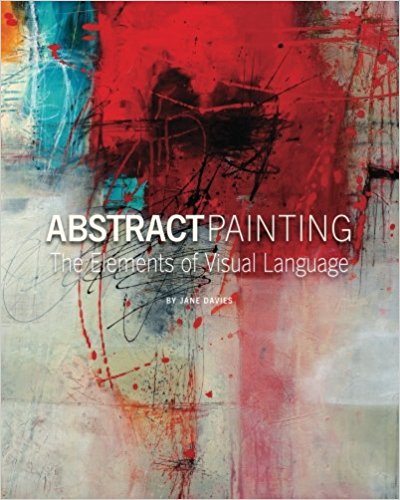
4 Books on Abstract Art Worth Reading Right Now
My cousin recently asked me if I could recommend any abstract art books for a newbie. I was visiting him in Houston, and ended up dragging him to visit the Menil Collection, where we spent several hours visiting the Cy Twombly Gallery, the Dan Flavin Gallery, and the Rothko Chapel. He is mostly a science oriented person. He felt a bit intimidated by some of the work we saw—not because he lacked the ability to appreciate culture. Quite the opposite. He is an accomplished musician, and has a sophisticated grasp on how to listen, how to talk about what he hears, and how to describe how it makes him feel. He simply lacks the training on how to apply the same kind of process to his appreciation of abstract art. He did not know how to look, or for that matter where to look. Nor did he feel confident that he possessed the vocabulary to be able to adequately express his reactions in the event that he did actually decide on where to focus his gaze. We had some great talks about the topic, in which I learned a lot as well. And I offered some suggestions for a few very old texts written by abstract art pioneers. But I also promised I would recommend some more recent books, which offer a more contemporary point of view on the subject. Here are four of my recommendations:
Abstract America
This massive, 400-page tome is an excellent introduction to the ins and outs of 21st Century abstract art. Published by the Saatchi Gallery in 2009 on the occasion of an exhibition of the same name, it focuses on the material and intellectual roots of American abstract art post-9/11. When the exhibition premiered in London, the Guardian called it “Stupid Stuff Turned Out Smart.” In fact, many who have read this book despise what they find in its pages. I disagree, however. I consider it a broad, intelligent accounting of trends and trendsetters that continue to reverberate through the abstract art world even now, nearly a decade later. It is no manifesto; nor is it the type of book that will help you pass an art history test. What it is though is something that will help you relax and learn how to have a good time with your eyes.
Pictures of Nothing: Abstract Art Since Pollock
As the title of this book suggests, its author faces head on the most common cliché about abstract art: that it is meaningless. The author is Kirk Varnedoe, one of the most qualified writers who could have taken on this mighty topic. Varnedoe died of cancer at the age of 57, just months after delivering the final lectures from which this book was compiled. He was the Chief Curator of Painting and Sculpture at the Museum of Modern Art in New York for 13 years. Despite his depth of knowledge and expertise, Varnedoe wrote this text as something intended to be read aloud to a general audience. It is simple to follow and often entertaining. It was important to Varnedoe that people who are not art professionals be able to understand how abstract art relates to every day life. This book makes this argument confidently, using real world examples of contemporary abstract artists whose work helps overcome the skepticism that is so often heaped upon their field.
Painting and Understanding Abstract Art
Written by professional artist and teacher John Lowry, this is a fun little book that endeavors to help artists develop the courage to broach the oft-intimidating field of abstraction. I enjoyed reading it because Lowry talks about art as if he was a non-artist. He takes an enormously wide view of art history that is decidedly (and pleasantly) non-academic. Most importantly, he understands that artists are not just automatons performing a physical task—they are thinking beings. He approaches his topic from the perspective that it is not enough to teach an artist the techniques, the materials, the processes, or the formal visual aspects of abstraction. To really understand abstract art, an artist must understand the mental, psychological, and emotional aspects of the field. At times, this book seems to wander and other times it jumps around. Sometimes Lowry brings up exciting topics but does not fully flesh them out. Nonetheless, his voice is conversational and likable, and his insights into what he is thinking when he sets about to make an abstract painting are invaluable to anyone trying to gain a fuller understanding of the inner processes of working artists.

Abstract Painting: The Elements of Visual Language - book cover
Abstract Painting: The Elements of Visual Language
This is a straightforward, easy to understand book about the formal visual elements of abstract art. If you are a novice to art-speak, or you find yourself intimidated when trying to read academic or overly technical art writing, this is a book for you. It was written by Jane Davies, an artist and teacher. Davies wrote it specifically because she realized her art students lacked the basic vocabulary to talk about the visual aspects of their own work. She would ask them to describe what they had made, and they would only talk about their methods and materials. They could not discuss with confidence the abstract visual elements of the imagery. Davies breaks the topic down into elements, a chapter in which readers learn how to talk about the classic elements of design (line, shape, mass, pattern, texture, depth); color, a chapter that covers basic issues like hue and value, and more sophisticated topics, like color relationships; and mechanics of composition, a chapter dealing with standard compositional formats, harmony, and balance. Finally, Davies offers simple advice on how to use everyday language to talk meaningfully about what you see when you look at an abstract artwork, no matter who the artist was.
Featured image: Abstract America - book cover
By Phillip Barcio






